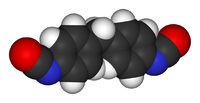
Applicability of Spray Polyurethane Foam Ventilation Guideline for Do-It-Yourself Application Events.
Sign Up to like & getrecommendations! Published in 2019 at "Building and environment"
DOI: 10.1016/j.buildenv.2019.04.033
Abstract: Small two-component spray polyurethane foam (SPF) application kits are often applied by Do-It-Yourself (DIY) consumers. The United States Environmental Protection Agency (EPA) publishes a guideline for ventilating a space where SPF is being applied to… read more here.
Keywords: ventilation guideline; ventilation; application; spray polyurethane ... See more keywords

Assessment and control of exposures to polymeric methylene diphenyl diisocyanate (pMDI) in spray polyurethane foam applicators.
Sign Up to like & getrecommendations! Published in 2019 at "International journal of hygiene and environmental health"
DOI: 10.1016/j.ijheh.2019.04.014
Abstract: In this work we characterize personal inhalation and dermal exposures to diphenyl methane diisocyanate (MDI) and other species in polymeric MDI (pMDI) formulations during spray polyurethane foam (SPF) insulation at 14 sites in New England.… read more here.
Keywords: mda; pmdi; diisocyanate; methylene diphenyl ... See more keywords

Chlorinated paraffins and tris (1-chloro-2-propyl) phosphate in spray polyurethane foams - A source for indoor exposure?
Sign Up to like & getrecommendations! Published in 2021 at "Journal of hazardous materials"
DOI: 10.1016/j.jhazmat.2021.125758
Abstract: In this study, we investigated chemical additives present in new and used spray polyurethane foams (SPFs) and assessed the dermal transfer through direct contact. This first study shows that cured do-it-yourself spray one-component SPFs (OCFs)… read more here.
Keywords: tris chloro; spray polyurethane; polyurethane foams; tcipp ... See more keywords

Testing of Disposable Protective Garments Against Isocyanate Permeation From Spray Polyurethane Foam Insulation
Sign Up to like & getrecommendations! Published in 2018 at "Annals of Work Exposures and Health"
DOI: 10.1093/annweh/wxy030
Abstract: Background Diisocyanates (isocyanates), including methylene diphenyl diisocyanate (MDI), are the primary reactive components of spray polyurethane foam (SPF) insulation. They are potent immune sensitizers and a leading cause of occupational asthma. Skin exposure to isocyanates… read more here.
Keywords: permeation; insulation; protective garments; polyurethane foam ... See more keywords